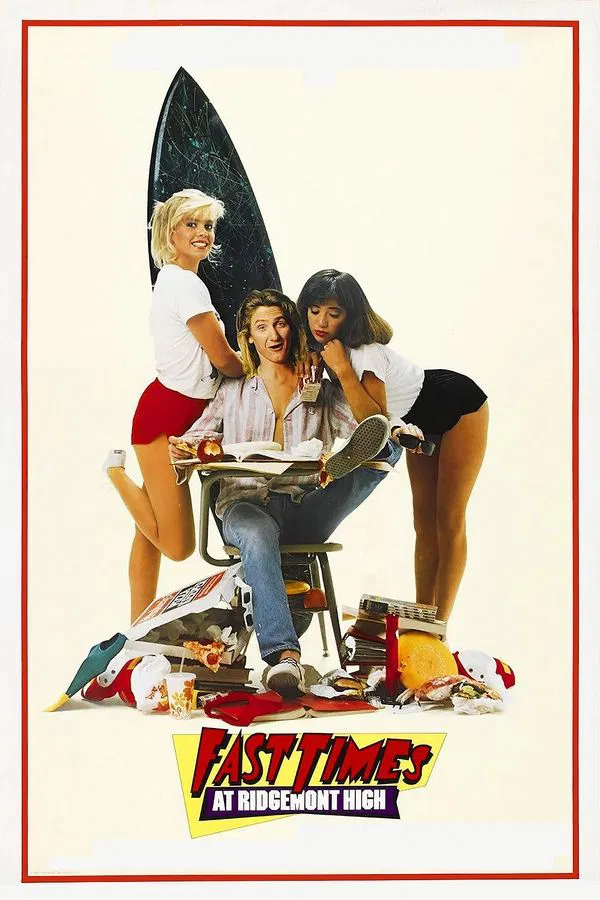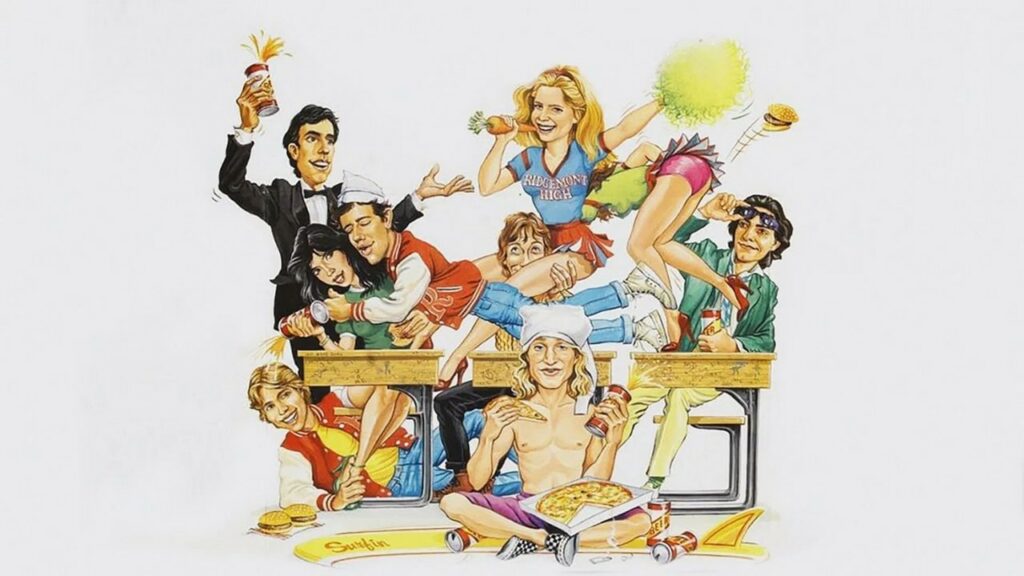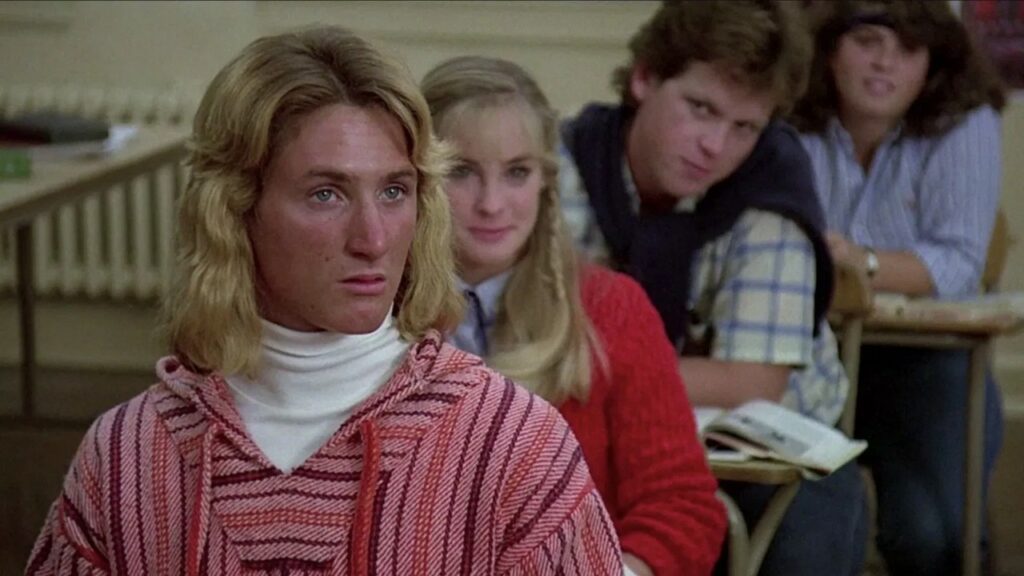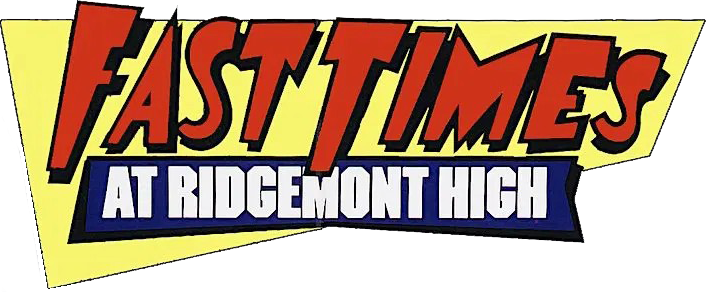Fast Times 40 Anniversary


Enduringly Relevant: A Fast Times at Ridgemont High (1982) Review
The teen comedies of the 1980s are a genre often recalled with nostalgic fondness but rarely taken seriously. Yet, amidst the plethora of lightweight films from that era, Amy Heckerling’s Fast Times at Ridgemont High (1982) stands out . This isn’t just another tale of high school life; it’s a surprisingly frank, influential, and still relevant look at American youth, filmed with a rare empathy and realism for the genre . Based on the journalistic experiences of Cameron Crowe and marking the directorial debut for Heckerling , the film transcended stereotypes and left a significant mark on culture .
Undercover in the High School Halls: Crafting a Cult Classic
The uniqueness of Fast Times stems largely from its origins. The screenplay, penned by Cameron Crowe himself, is based on his 1981 book of the same name . This book was the result of an unusual experiment: the 22-year-old Crowe, already a journalist for Rolling Stone, spent an entire school year undercover at Clairemont High School in San Diego, observing and chronicling the lives of teenagers . This journalistic, almost anthropological approach provided the material with a rare authenticity, devoid of contrived plot points and moralizing .
Bringing this material to the screen fell to Amy Heckerling, for whom the film was a feature directorial debut . Choosing a female director for such a candid teen film was atypical for the early 80s . Heckerling approached the material with a distinct vision: she aimed for realism, empathy towards her young characters, and avoided judgment of their actions, even the most controversial ones . It was likely her perspective that allowed for such a nuanced and honest portrayal of the female characters’ experiences, particularly Stacy’s . The combination of Crowe’s authentic source material and Heckerling’s empathetic direction created the unique alchemy that allowed the film to be both specific to its era and universally relatable, avoiding the broad caricatures common to the genre .
Casting was another crucial element of its success. Instead of established stars, Universal Pictures and the filmmakers opted for young, relatively unknown actors, many of whom would go on to become household names: Sean Penn, Jennifer Jason Leigh, Phoebe Cates, Judge Reinhold, Forest Whitaker, Eric Stoltz, and Nicolas Cage (though his role was minor) . This choice, driven partly by the relatively modest budget (around $4.5 million) and a desire for authenticity, unexpectedly turned the film into a launchpad for a generation of talent . Contrasting the youth was veteran Ray Walston as the stern history teacher, Mr. Hand . This reliance on unfamiliar faces enhanced the sense of realism; audiences saw characters resembling real high schoolers, not stars playing teenagers .
Despite being backed by a major studio, Universal, the film faced challenges. Its frank depiction of teen sexuality, drug use, and the subject of abortion sparked controversy and led to an R rating . The studio pushed for softening certain scenes, but Heckerling and Crowe defended their vision . This struggle for realism against commercial concerns mirrored broader societal debates about how teenagers should be portrayed in cinema. Ultimately, despite its studio production, the film’s thematic boldness, fresh directorial perspective, and focus on authenticity gave Fast Times an independent spirit that influenced the genre’s future .
A Slice of Life (and Pizza): Plot, Structure, and Themes
Fast Times departs from the traditional linear structure of teen movies. The film is built episodically, following several intersecting storylines of various students at Ridgemont High . This mosaic structure resembles a kaleidoscope of school life or the pages of a yearbook, where personal dramas unfold against a shared social landscape . This approach enhances the feeling of realism, mirroring the fragmented nature of the teenage experience itself .
Several key stories are at the forefront:
- Stacy Hamilton (Jennifer Jason Leigh) and Linda Barrett (Phoebe Cates): Best friends working at a pizza place in the mall, navigating the world of romance and sexuality . The naive Stacy seeks love and experience, leading to awkward and sometimes painful encounters, including a liaison with Mike Damone (Robert Romanus) and a subsequent pregnancy and abortion . The more experienced Linda acts as a confidante and navigates her own awkward romance with Mark “Rat” Ratner .
- Mark “Rat” Ratner (Brian Backer): A shy, insecure movie usher nursing a crush on Stacy, receiving questionable dating advice from his smoother friend Damone . His story is a classic comedy of awkwardness and finding one’s footing.
- Jeff Spicoli (Sean Penn): The perpetually stoned, carefree surfer dude locked in a constant battle of wills with the strict history teacher, Mr. Hand (Ray Walston) . His “no shirt, no shoes, no dice!” philosophy and epic classroom tardiness became iconic .
- Brad Hamilton (Judge Reinhold): Stacy’s older brother, a popular senior who gets a harsh dose of reality through a series of humiliating part-time jobs (from seafood salesman to pirate-costumed fast-food worker) and relationship mishaps .

Through these intertwined lives, the film explores a wide range of themes relevant to adolescents (and beyond):
- Teen Sexuality: Depicted frankly, without gloss or judgment – from awkward first experiences and the search for intimacy to unplanned pregnancy and abortion . The film shows desire, confusion, and consequences .
- Coming of Age: Characters confront responsibility, disappointment, the need to make choices, and living with the outcomes . This applies to sexuality, work, and relationships.
- Social Hierarchies: Ridgemont High is shown as a microcosm of society with its own cliques, popular kids, outsiders, unwritten rules, and struggles for status .
- Part-Time Job Culture: Significant focus is given to the teens’ jobs in malls, fast-food joints, and movie theaters . This isn’t just background; it’s a crucial part of their lives, a source of money, humiliation, and life experience, grounding the film in a reality often missing from the genre .
- Subcultures: The surfer/stoner culture is vividly portrayed through Spicoli, contrasting with the more conformist aspirations of other characters .
- Facing Consequences: The film doesn’t shy away from showing that actions have repercussions, whether it’s getting fired, breaking up, or facing difficult choices like Stacy’s .
What was particularly notable, and arguably revolutionary for a mainstream teen film in 1982, was the non-judgmental, almost observational approach to difficult topics like abortion and casual sex . The film doesn’t preach; it presents these situations as part of the complex reality of teenage life, which became key to its longevity and impact .
The Class Roster: Characters and Standout Performances
The strength of Fast Times lies significantly in its memorable characters and the brilliant ensemble cast, whose youth and relative anonymity at the time added to the film’s authenticity .
- Stacy Hamilton (Jennifer Jason Leigh): Leigh portrays Stacy with captivating vulnerability and naiveté . Her journey from an inexperienced girl seeking romance to confronting the harsh realities of her choices forms one of the film’s central and most dramatic arcs . Leigh effectively conveys her character’s confusion and pain without excessive melodrama.
- Linda Barrett (Phoebe Cates): Cates embodies the more confident and sexually knowledgeable friend who offers Stacy advice (not always successfully) . Her famous pool scene became one of the film’s most talked-about moments, but Linda’s character is more than just an object of desire; she also shows supportive friendship and her own insecurities in her relationship with “Rat” .
- Mark “Rat” Ratner (Brian Backer): Backer perfectly captures the “sweet but awkward” archetype . His fumbling attempts to woo Stacy, fueled by Damone’s terrible advice, are both humorous and sympathetic.
- Mike Damone (Robert Romanus): Romanus plays the smooth-talking “man of the world” who reveals himself to be unreliable and cowardly when faced with the consequences of his actions with Stacy . He represents superficial coolness.
- Brad Hamilton (Judge Reinhold): Reinhold convincingly portrays the downfall of the “king of the school” as he confronts the humiliating grind of low-wage jobs and the disappointments of adult life . His character adds a crucial layer of social reality.
- Mr. Hand (Ray Walston): The veteran Walston creates a memorable portrait of the stern but ultimately fair teacher whose antagonism with Spicoli provides constant comedic tension . Their final “showdown” is one of the film’s warmest scenes .
- Jeff Spicoli (Sean Penn): Undeniably the breakout role and the film’s most iconic character . Penn reportedly immersed himself in the role, staying in character even off-set . He created not just a caricature of a stoned surfer but a charismatic, albeit irresponsible, rebel with his own code and unforgettable lines (“Aloha, Mr. Hand!”) . Spicoli became a cultural phenomenon, the archetype of the California slacker, and the role instantly catapulted Penn to stardom, showcasing an incredible range he would later develop in his dramatic career . While Spicoli could have been a one-note comic relief, Penn’s performance and Crowe’s writing imbued him with a strange charm that made him more than just a punchline .
The collective performance of the young ensemble, their naturalism, and lack of star polish were key to the film’s success . They created a gallery of recognizable, flawed teenage characters that stood in stark contrast to the glossy Hollywood standards of the time.

Heckerling’s Vision: Direction, Style, and Soundtrack
Amy Heckerling’s directorial debut in Fast Times is marked by a freshness and confidence rare for a newcomer, especially on a studio project .
- Directorial Style: Heckerling adopts a realistic, almost observational approach . She views her characters without judgment, with clear sympathy and understanding for their struggles . This is particularly evident in scenes dealing with female experiences – Stacy and Linda’s conversations, the abortion clinic scene . Her direction avoids excessive stylization or moralizing, letting the situations and characters speak for themselves . This empathy and refusal to exploit sensitive topics, especially in the portrayal of sexuality, set the film apart from many contemporaries and are key to its success .
- Cinematography: Matthew F. Leonetti’s cinematography effectively captures the atmosphere of early 80s Southern California . Bright sunlight, pastel colors, the specific architecture of suburbs, shopping malls (“mall culture” in full display), and high school hallways – all create a believable and recognizable visual world . The camera often observes characters from a medium distance, emphasizing realism and avoiding excessive dramatization. The film’s visual style isn’t just background; it’s integral to its authenticity.
- Soundtrack: The music of Fast Times has become as iconic as the film itself . Featuring hits from early 80s rock and new wave (The Cars, Tom Petty, The Go-Go’s, Oingo Boingo, Jackson Browne, Joe Walsh, etc.), the soundtrack perfectly captures the energy and spirit of the time . Music here isn’t just background noise; it’s an active participant, underscoring moods, characterizing individuals (like Spicoli’s preferred tunes), and weaving itself into the narrative fabric . Many songs became inextricably linked with the film and its moments, enhancing its nostalgic power and cultural resonance.
- Overall Tone: Heckerling masterfully balances comedy and drama . The film is filled with funny moments stemming from character awkwardness, situational absurdity (especially involving Spicoli and Brad), and Crowe’s witty dialogue . However, the comedy doesn’t overshadow the serious themes . Moments of pain, disappointment, and difficult choices are treated with appropriate gravity and empathy . This blended tone is a primary reason the film feels so vibrant and truthful .
Ridgemont High’s Report Card: Reception and Cultural Impact
Released in August 1982, Fast Times at Ridgemont High received generally positive reviews from critics, although some noted the controversial nature of its frank content . However, its real success came from audiences. On a modest budget of approximately $4.5 million, the film grossed over $27 million at the U.S. box office, becoming a financial success for Universal .
- Critical Reception: Initial reviews often praised the humor, the acting (especially Penn), and the fresh perspective on teen life . Over time, retrospective assessments have become even stronger . Critics and film historians recognized the film’s groundbreaking honesty in portraying youth, its influence on the genre, and Heckerling’s directorial talent . Review aggregators reflect this: Rotten Tomatoes shows high ratings from both critics (79% “Fresh” based on 57 reviews) and audiences (79%) . IMDb users rate it 7.1/10 . Metacritic assigns the film a score of 61/100, indicating “generally favorable reviews” .
- Cultural Status: Fast Times quickly achieved cult status . Lines from the film (“Aloha, Mr. Hand,” “No shirt, no shoes, no dice!”) entered the popular lexicon . The character of Jeff Spicoli became an archetype and counter-culture icon . The film significantly influenced subsequent teen comedies and dramas, setting a benchmark for realism and candor . Its importance was officially recognized in 2005 when it was selected for preservation in the United States National Film Registry by the Library of Congress as being “culturally, historically, or aesthetically significant” . This cemented its transition from a popular comedy to an important cultural artifact.
- Enduring Legacy: The film continues to attract new generations of viewers due to its honesty, humor, and relatable characters . It remains a touchstone for discussions about the portrayal of teenagers in film, issues of sexuality, and the process of growing up . Its success also paved the way for Amy Heckerling’s career (she would later direct another iconic teen film, Clueless) and launched a constellation of young actors . The film proved that complex adolescent issues could be addressed honestly and humorously without resorting to preaching or exploitation, securing its place in the pantheon of American cinema .

Final Grade
Fast Times at Ridgemont High is much more than just a funny 80s comedy. It’s an insightful, honest, and remarkably bold portrait of American youth for its time . Amy Heckerling’s directorial debut, built on Cameron Crowe’s unique source material, features a rare blend of humor, drama, and realism .
The film brilliantly captures the awkwardness, confusion, and contradictions of teenage life, unafraid to tackle complex themes like sexuality and its consequences . The ensemble of young actors, led by an unforgettable Sean Penn as Spicoli and a touching Jennifer Jason Leigh as Stacy, exhibits striking naturalism . Heckerling achieves a perfect balance between comedy and drama, creating a film that is simultaneously hilarious and moving .
Although firmly rooted in the atmosphere of early 80s Southern California, the film’s themes of growing up, self-discovery, and confronting reality remain universal . Its inclusion in the National Film Registry is a well-deserved recognition of its cultural significance and enduring relevance . Fast Times is a classic that has stood the test of time and still resonates with humor, insight, and recognition.
Key Film Facts
| Feature | Detail |
|---|---|
| Director | Amy Heckerling |
| Year Released | 1982 |
| Genre | Teen Comedy-Drama, Coming-of-Age |
| Key Cast | Sean Penn, Jennifer Jason Leigh, Judge Reinhold, Phoebe Cates, Brian Backer, Robert Romanus, Ray Walston |
| Ratings (Approx.) | IMDb: 7.1/10 , Rotten Tomatoes (Critics): 79% , Rotten Tomatoes (Audience): 79% , Metacritic: 61/100 |
| Box Office | Budget: ~$4.5M , US Gross: ~$27.1M |
| Status | Cult Classic, National Film Registry Inductee (2005) |
© 2025 Fast Times 40 Anniversary. All rights reserved.
